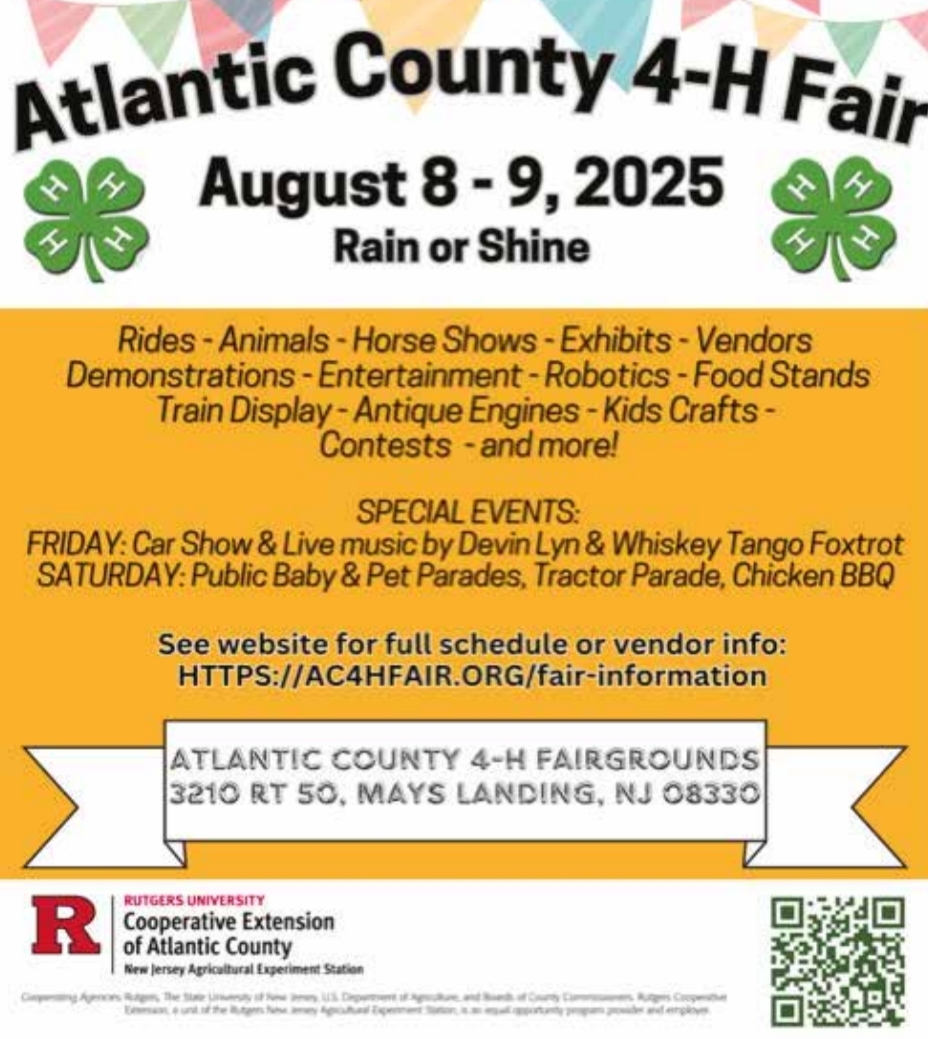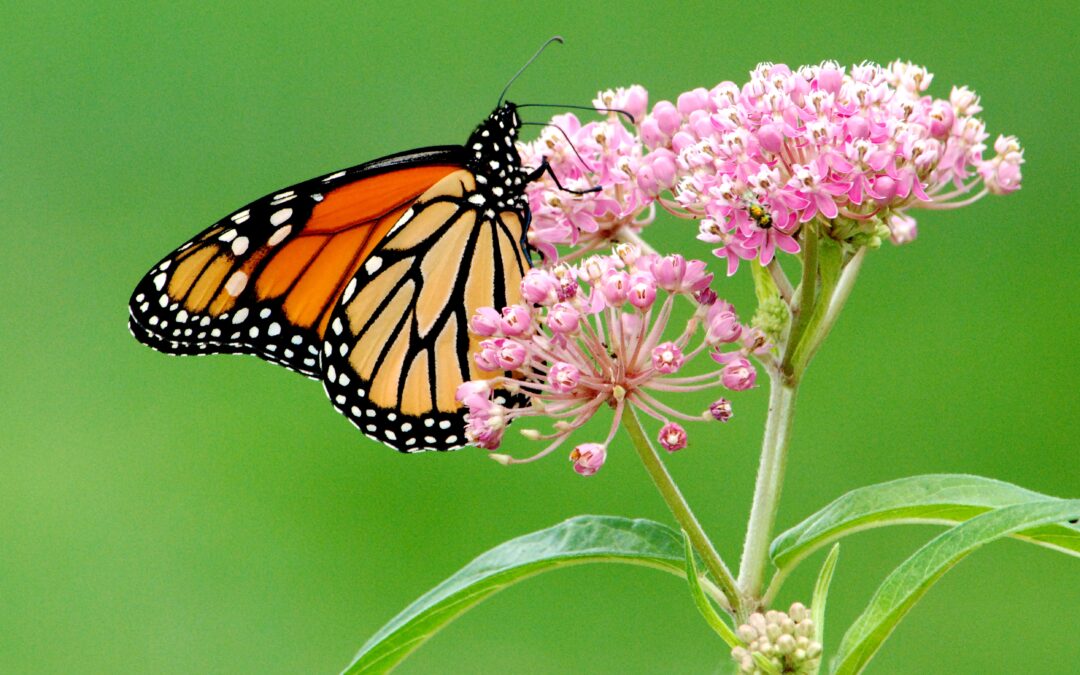At the recent workshop “Monarchs With Mary,” a full house enjoyed stunning views of the beach and ocean from the Bloom Pavilion behind the Margate Library. Sponsored by Sustainable Downbeach, the session began with members discussing the many ways Margate, Longport and Ventnor are working together for a greener Absecon Island.
After stressing the importance of construction containment and a pending state law to ban leaf blowers that harm wildlife, N.J. Master Naturalist and Wild at Heart bird rescuer Mary Lenahan greeted participants with the ease of her 35 years as a teacher in Pleasantville. Introduced as “a local treasure and wildlife expert,” the longtime Ventnor resident and Edwin B. Forsythe National Wildlife Refuge volunteer shared striking images of monarchs during the informative presentation.
According to Lenahan, monarchs lay between 300 and 500 eggs during their two- to four-week lifetime. One egg may survive and appear on the underside of a milkweed plant, hatching in three to five days, or up to seven if the weather is cold. An increased number may survive if kept indoors in containers, which Lenahan displayed at the front of the light-filled room.
“It’s great for kids,” she said. “You’re helping the ecosystem when you plant milkweed because nectar is provided from these sources.”
Lenahan explained that a caterpillar molts its skin after one day and eats it. She added that “nature doesn’t waste anything.”
Photographs showed the egg through the caterpillar stages, which last seven to 14 days. After clinging to a horizontal surface for 18 to 24 hours, the caterpillar wiggles until its skin falls off. A butterfly emerges in about 10 days.
“The scales on a butterfly are like shingles on a roof,” Lenahan said, pointing to an extraordinary close-up. She paused often for questions throughout the interactive session.
One participant, who said Lenahan was “born to teach,” asked what nature has given butterflies to protect them from intense winds and heat.
“Not a lot,” she replied. “They cluster together on trees.”
Lenahan then described the monarchs’ spring and fall migrations, with routes through New Jersey. Three environmental triggers include shorter days, cooler nights and dwindling food supplies.
“Rub your hands together,” she said unexpectedly. “The sound of butterflies is like leaves rustling.”
According to experts, threats to monarchs include deforestation of fir forests, drug wars, habitat loss, pesticide and herbicide use, sprawl, and genetically modified crops. Lenahan emphasized that planting milkweed — which requires careful hand-washing due to its toxicity — and other native plants, including goldenrod, are key ways to help.
Before distributing free milkweed plants and wildlife seeds from Sustainable Downbeach, Lenahan highlighted additional resources, including Journey North, the North American Drought Monitor, and Monarch Watch, affiliated with the University of Kansas.
Planting a final seed, she shared a quote from Theodor Geisel (Dr. Seuss): “Unless someone like you cares a whole awful lot, nothing is going to get better. It’s not.”
Andrea K. Hammer has written articles for international publications.













